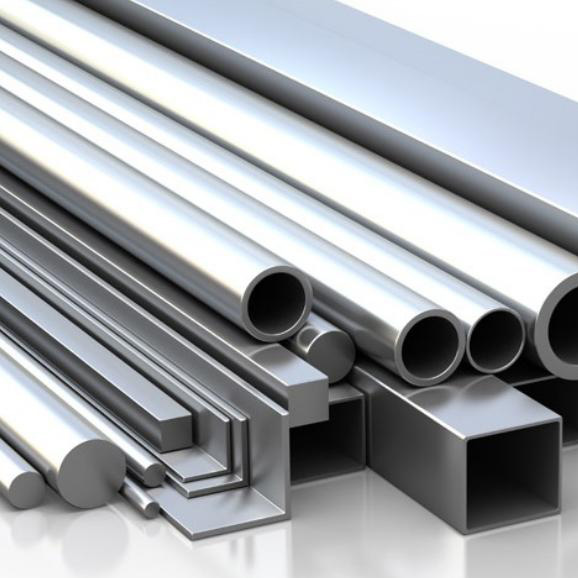Steel is a high carbon tool steel that offers good resistance to wear and tear. It's used for cutting tools, drill bits, and other items requiring high strength, good toughness and excellent wear resistance. The grain structure of this material is similar to that found in many steels. This means it can be machined with cutting tools that have a similar finish. It also has good machinability characteristics which means it will not heat-treat as easily as other steels.

Steel 1008 is available in hot form and cold rolled sheet forms. The hot form is annealed before machining while the cold rolled sheet is unannealed. This affects the surface finish of the steel and how well it will hold an edge when finished with a honing tool or sharpening stone.
Steel 1018 is a low alloy steel with good wear resistance and fatigue life. It has good corrosion resistance and sharp cutting properties.
Steel 1020 is a high strength low alloy steel with good corrosion resistance and excellent hot forming properties. It can be machined easily by hand tools and it can also be further processed into high strength low alloy steels or stainless steels or carbon steels.
Steel 1045 is a medium-high strength low alloy steel with good hot forming properties and good corrosion resistance. It has excellent toughness at room temperature and can be machined easily by hand tools, but when it gets hot it becomes brittle.
Steel 430F
The 430F steel is a medium carbon steel that offers excellent strength and wear resistance. It has good machinability, weldability and corrosion resistance. The 430F steel can be used for a variety of applications including: tooling, cutting tools, knives, drills, gears and dies.
Steel 4130
4130 is an alloy of chromium (50%) and molybdenum (20%). It is used in high-strength low-alloy steels that have high tensile strength, low elongation and excellent toughness.
Steel 4140
4140 is an alloy of nickel (35%), chromium (17%), manganese (10%) and nickel (10%). It has good machinability, weldability and corrosion resistance. The characteristics of this alloy make it suitable for use in machinery parts such as shafts and gears with higher loads.
Steel 40CrMo
40CrMo is an alloy of chromium (40%), carbon (10%) and molybdenum (10%). This material has excellent mechanical properties due to its combination of high hardness, wear resistance and toughness together with high tensile strength which makes it ideal for gears.
42CrMo is also a kind of high strength material. This product is mainly used in the construction of high-speed trains, aircraft, automobiles and other industries as well as in the production of various precision parts.
Steel 12L14 is a low alloy steel grade, containing manganese, silicon and molybdenum. It is widely used for the manufacture of die casting dies, and other purposes. The physical properties vary depending on the chemical composition.
Steel 12L15 is a low alloy steel grade, containing chromium and molybdenum. It is widely used for die castings and other applications requiring high strength and toughness at elevated temperatures. The physical properties vary depending on the chemical composition.
Stainless Steel 304
Stainless steel 304L is a low carbon version of stainless steel 304 with less carbon content than regular grade 304. This makes it easier to fabricate, weld and polish than regular grade 304 without any loss in strength or corrosion resistance. It can also be used in applications where high temperatures are expected such as exhaust manifold bolts, turbocharger bolts and turbine blade pins.
Stainless Steel 304F is an austenitic chromium-nickel stainless steel that combines the corrosion resistance of austenitic chromium-nickel alloys with the strength of ferritic iron base alloys. This makes it very attractive for applications where high strength at elevated temperatures is required such as furnace parts, heat exchanger tubes, steam generator tubes and nuclear reactor pressure vessels.
Stainless Steel 316
Stainless steel 316 is an austenitic, corrosion-resistant alloy with chromium as its primary constituent. It has an excellent combination of formability, strength and toughness. The 15-5-3 designation indicates a composition of 15% chromium, 5% molybdenum and 3% nickel. This material has excellent resistance to pitting and crevice corrosion in chloride solutions. It is also used in severe environments where high strength coupled with good corrosion resistance are required.
Stainless Steel 316L
Stainless steel 316L is similar to stainless steel 316 but contains low carbon content (0.030%). Stainless steel 316L is used when weldability is needed without sacrificing corrosion resistance or strength.
Stainless Steel 316F
Stainless steel 316F is similar to stainless steel 316 but contains 1% molybdenum instead of 5%. It has better resistance to pitting than stainless steel 316 and can be used at elevated temperatures up to 1800 degrees Fahrenheit (980 degrees Celsius).
Stainless Steel 303
Stainless Steel 303 has high tensile strength, good toughness and excellent resistance to chloride stress corrosion cracking. The alloy has high thermal conductivity and low heat distortion temperature. The material is also highly resistant to atmospheric corrosion, particularly in marine atmospheres. Corrosion resistance can be improved by the addition of molybdenum and nitrogen.
Stainless Steel 303 does not react with foods or beverages of any kind.
Stainless steel PH17-4
Stainless steel PH17-4 is a high carbon chrome molybdenum steel with a minimum yield strength of 110,000 psi and a tensile strength of 140,000 psi. It is used in the aircraft industry for many structural applications where high strength, good corrosion resistance and high temperature properties are required. The alloy is also known as P-1, P-11 or 18/8 stainless steel.
Most of our quotes are delivered within 24/36 hrs. and usually in much less time, depending on project details.
Our team will contact you directly about your CNC machining quote to ensure you’ve received and understand all aspects of your quotation and to answer any questions you may have about your options.